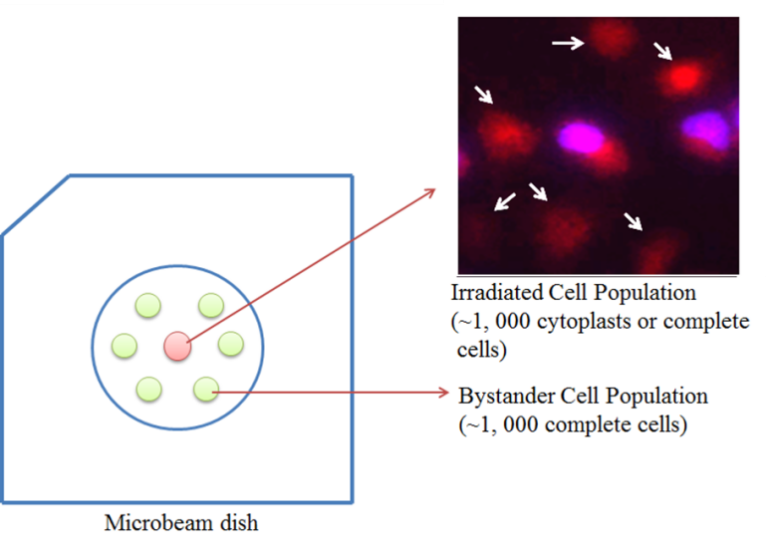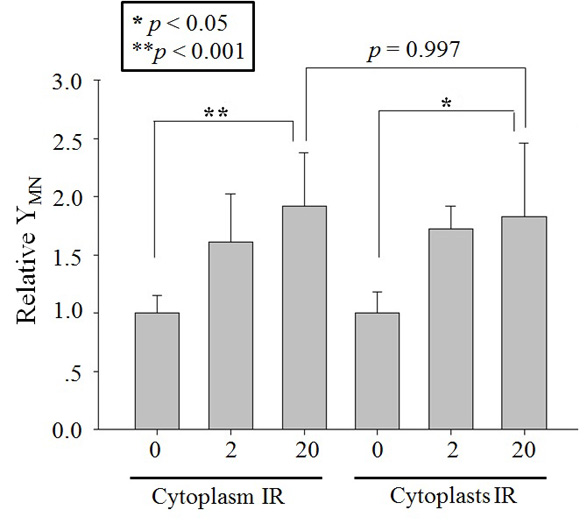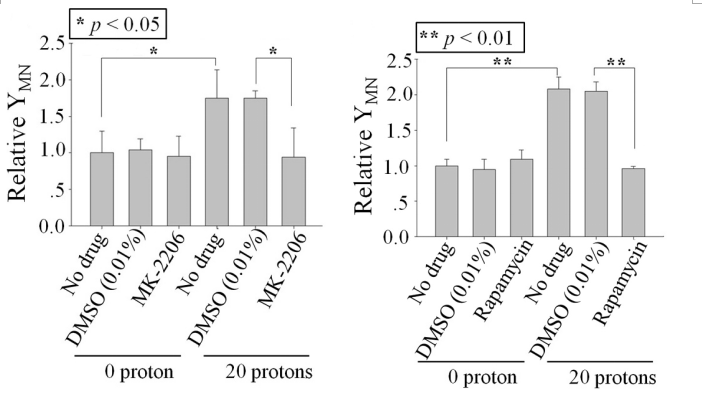
Nucleus is not necessary in cytoplasm irradiation-induced bystander effect, according to a recent study conducted by HAN Wei's team in Center of Medical Physics and Technology, Hefei Institutes of Physical Sciences.
Their work was published in Oncotarget with the title of "Akt/mTOR mediated induction of bystander effect signaling in a nucleus independent manner in irradiated human lung adenocarcinoma epithelial cells".
The radiation-induced bystander effect (RIBE), one kind of non-targeted effect of ionizing radiation, occurs when signal(s) released by the irradiated cells activate neighboring or distal non-irradiated cells and causes effects similar to direct irradiation, including the induction of chromosomal aberrations, changes of specific gene expression, genomic instability, mutation or even neoplastic transformation.
It is generally considered that RIBE can amplify the biological target area of radiation and cause genetic risks to the normal cells or tissues beyond the irradiated target in radiotherapy and other radiation exposures.
In fact, extensive studies on the health risks of radiation non-targeted effects, including radiation-induced bystander effect, particularly in the low-dose regime have been carried out in recent decades.
Previous studies proved that cytoplasm irradiation can induce bystander effect. However, cytoplasm irradiation-induced bystander effect could be attributed to a small amount of out-of-beam scattered ionizations in the nucleus. Therefore, it is important to clarify that whether the cytoplasmic irradiation-induced bystander effect was in a nucleus independent manner.
To answer this question, HAN's team prepared the cytoplasts in human non-small cell lung cancer A549 cells, irradiated the cytoplasts with proton microbeam irradiation, and assessed the bystander effect.
The results showed that 20 protons targeting cytoplasts can induce micronucleus rate of bystander cells increased significantly, which suggested that the bystander effect induced by cytoplasm irradiation can be independent of the nucleus.
In addition, they also proved that proton microbeam irradiation can induce rapid activation of the Akt/mTOR signaling pathway in the cytoplast, and the Akt/mTOR signaling pathway was involved in the cytoplastic irradiation-induced bystander effect.
Their work provides a new insight into the mechanisms driving the cytoplasm response to irradiation and their impact on the production of radiation-induced bystander effect signal(s).
This research was supported by the National Natural Science Foundation of China and the Innovative Program of Development Foundation of Hefei Center for Physical Science and Technology.

Figure 1. Schematic representation of irradiated and bystander cell population in the microbeam dish. (Image by LI Lu)

Figure 2. Radiation-induced bystander effect after proton targeting. (Image by LI Lu)

Figure 3. Activation of Akt/mTOR after proton targeting. (Image by LI Lu)

Figure 4. Effect of inhibitors on cytoplasts targeting-induced bystander effect. (Image by LI Lu)

86-10-68597521 (day)
86-10-68597289 (night)

86-10-68511095 (day)
86-10-68512458 (night)

cas_en@cas.cn

52 Sanlihe Rd., Xicheng District,
Beijing, China (100864)

